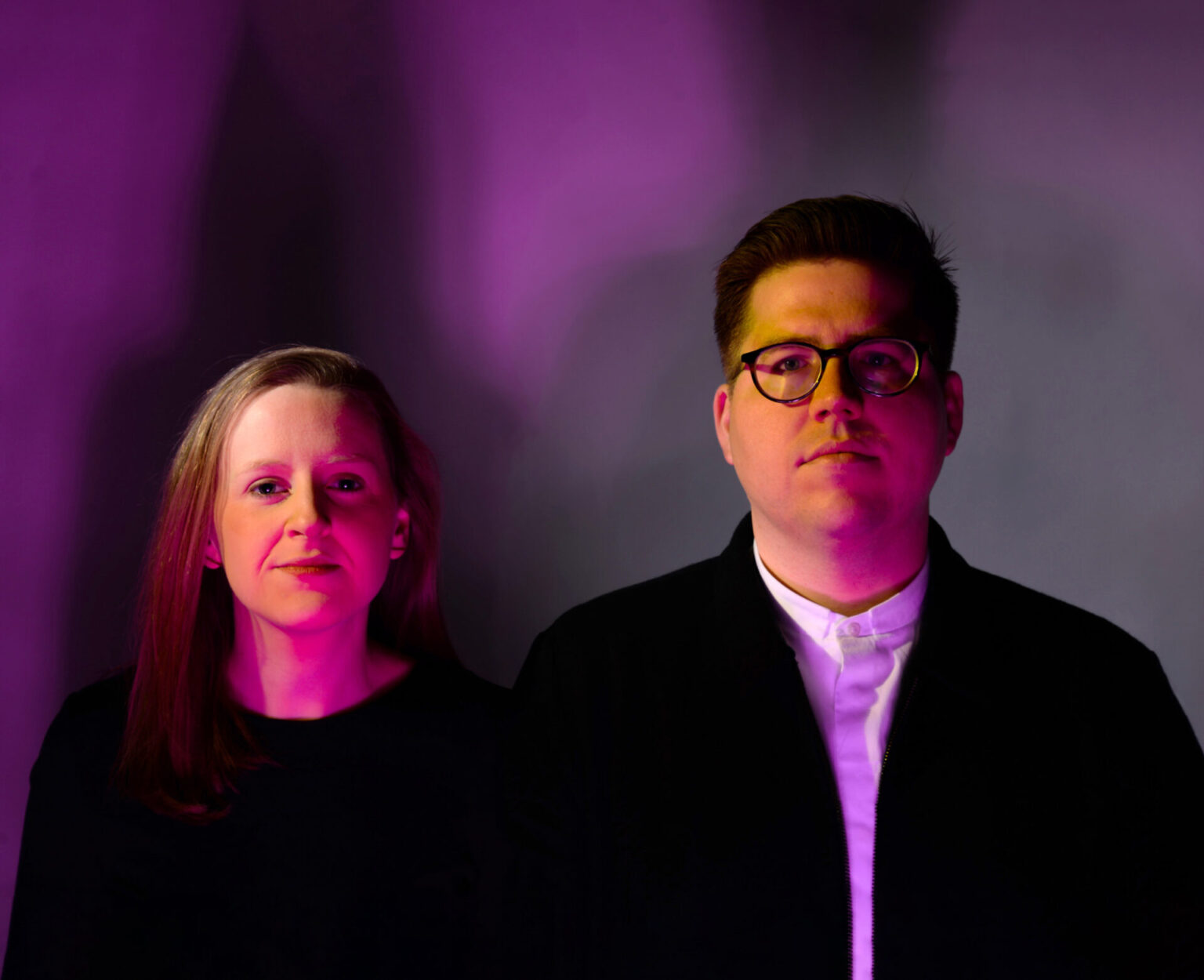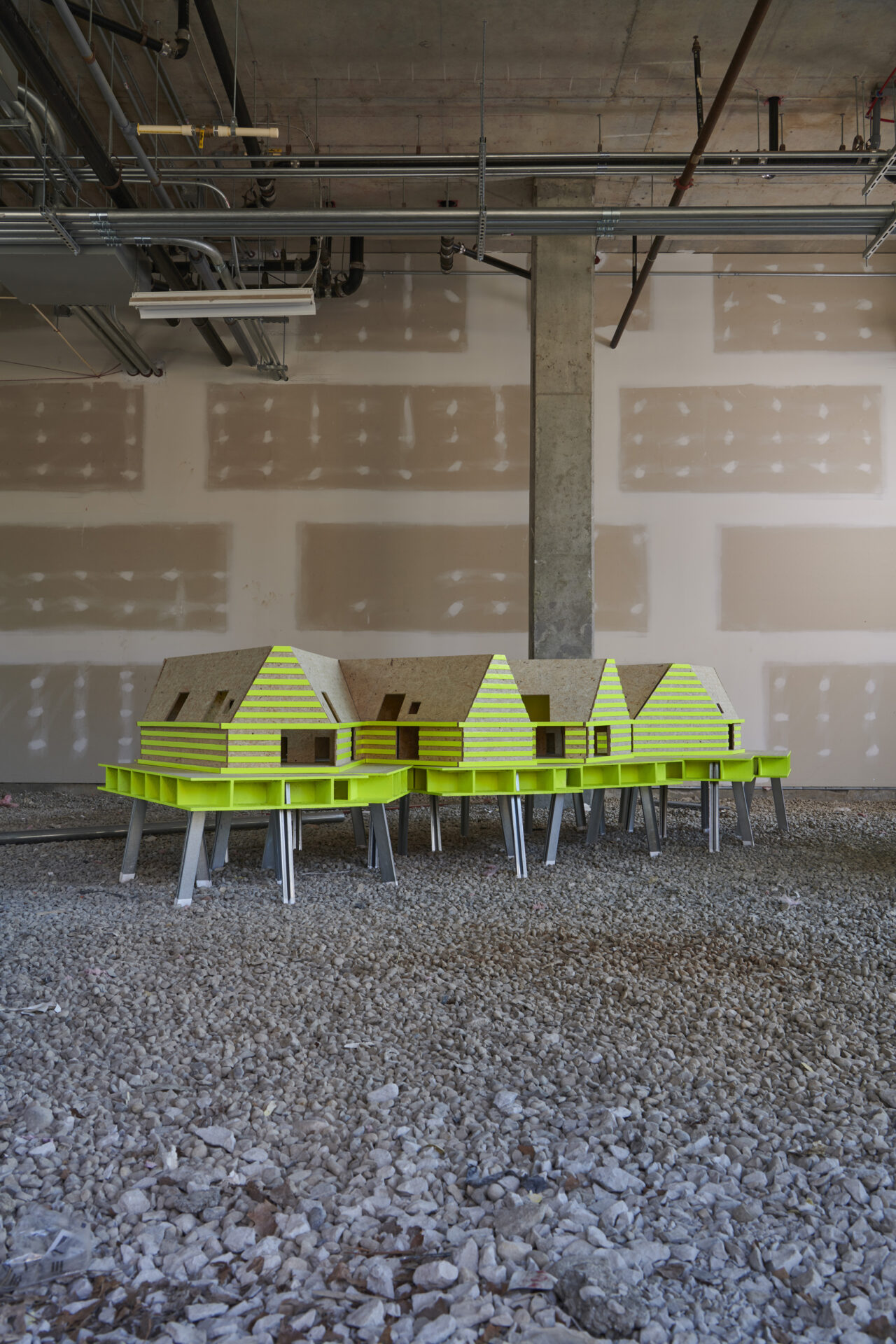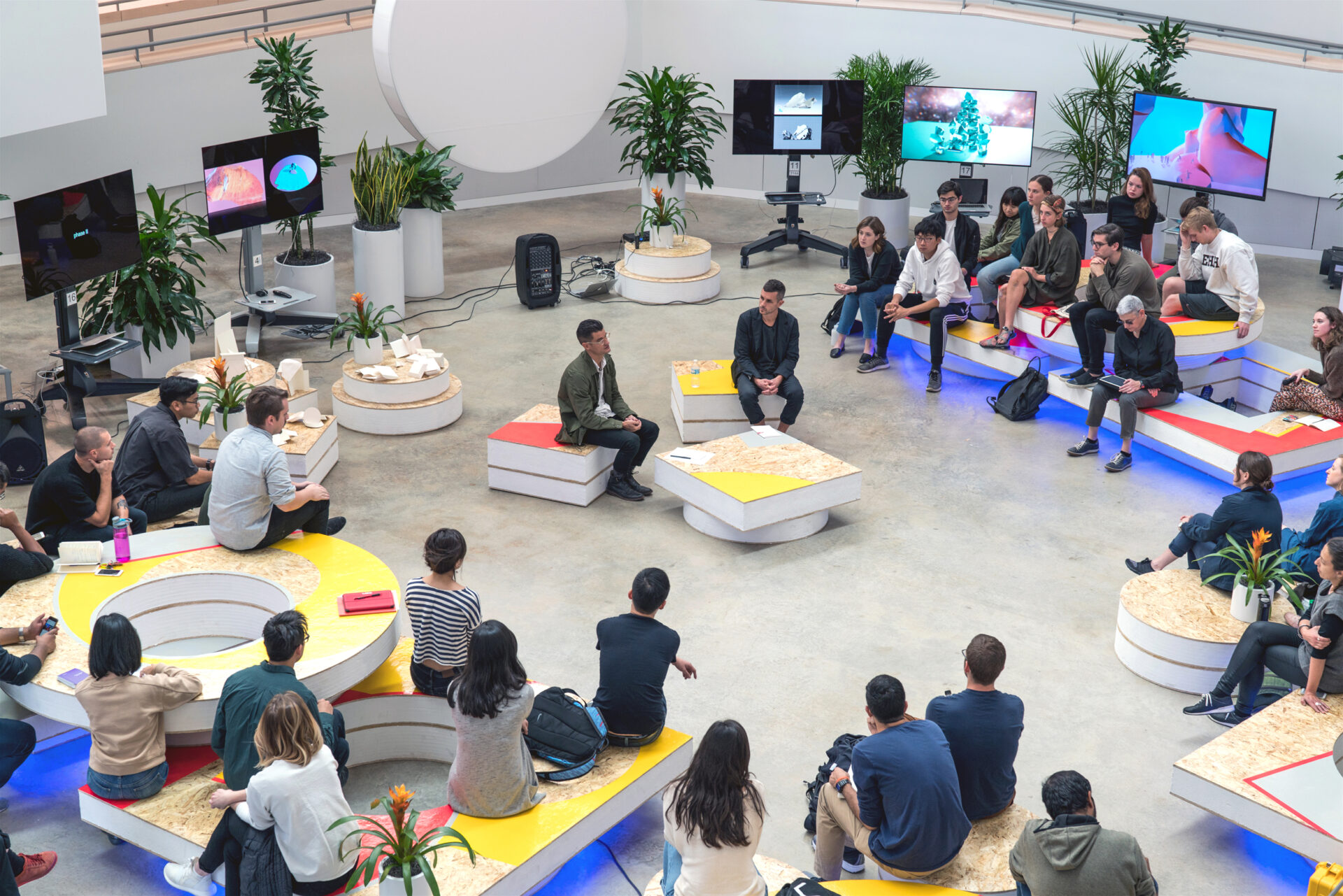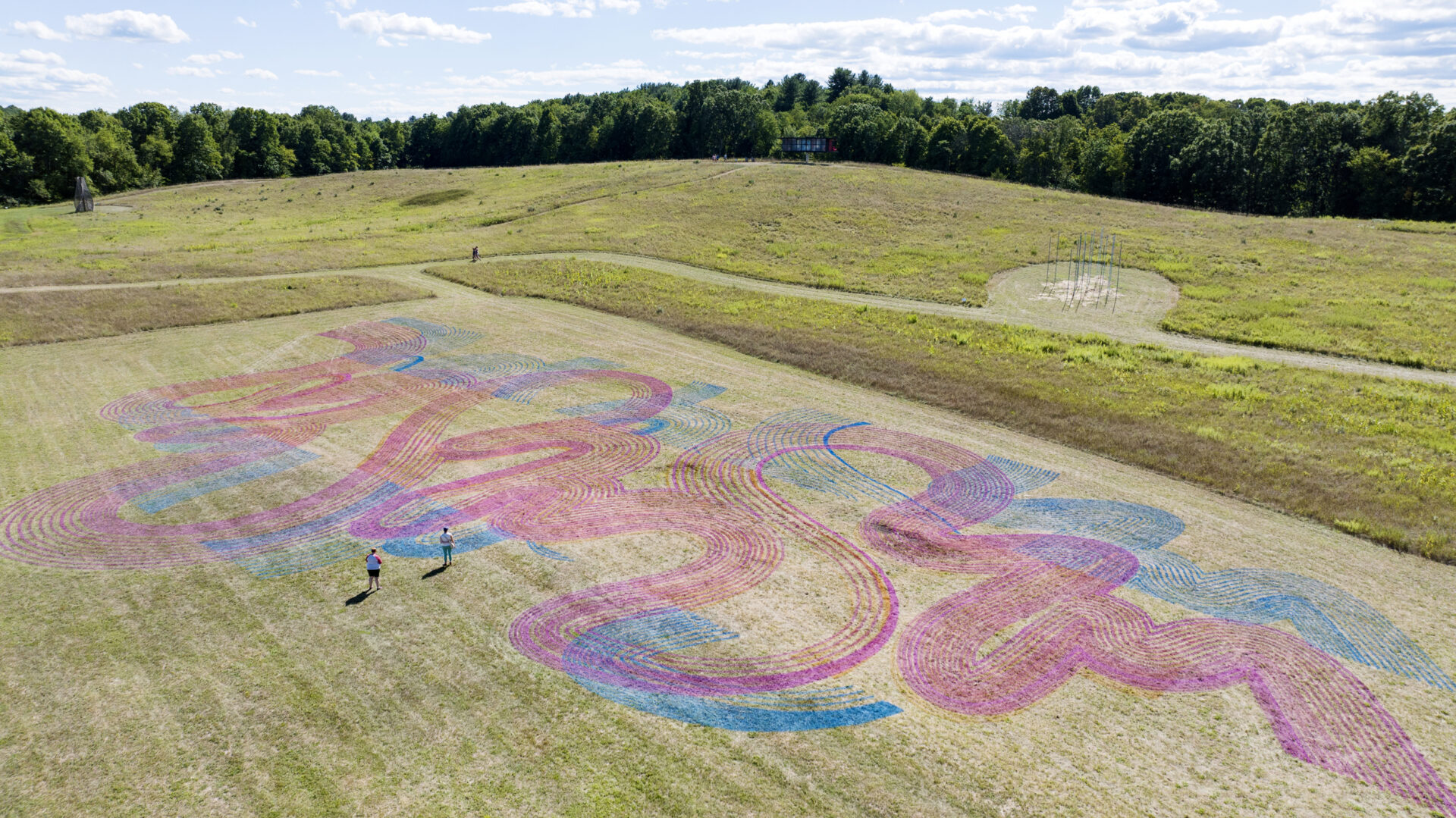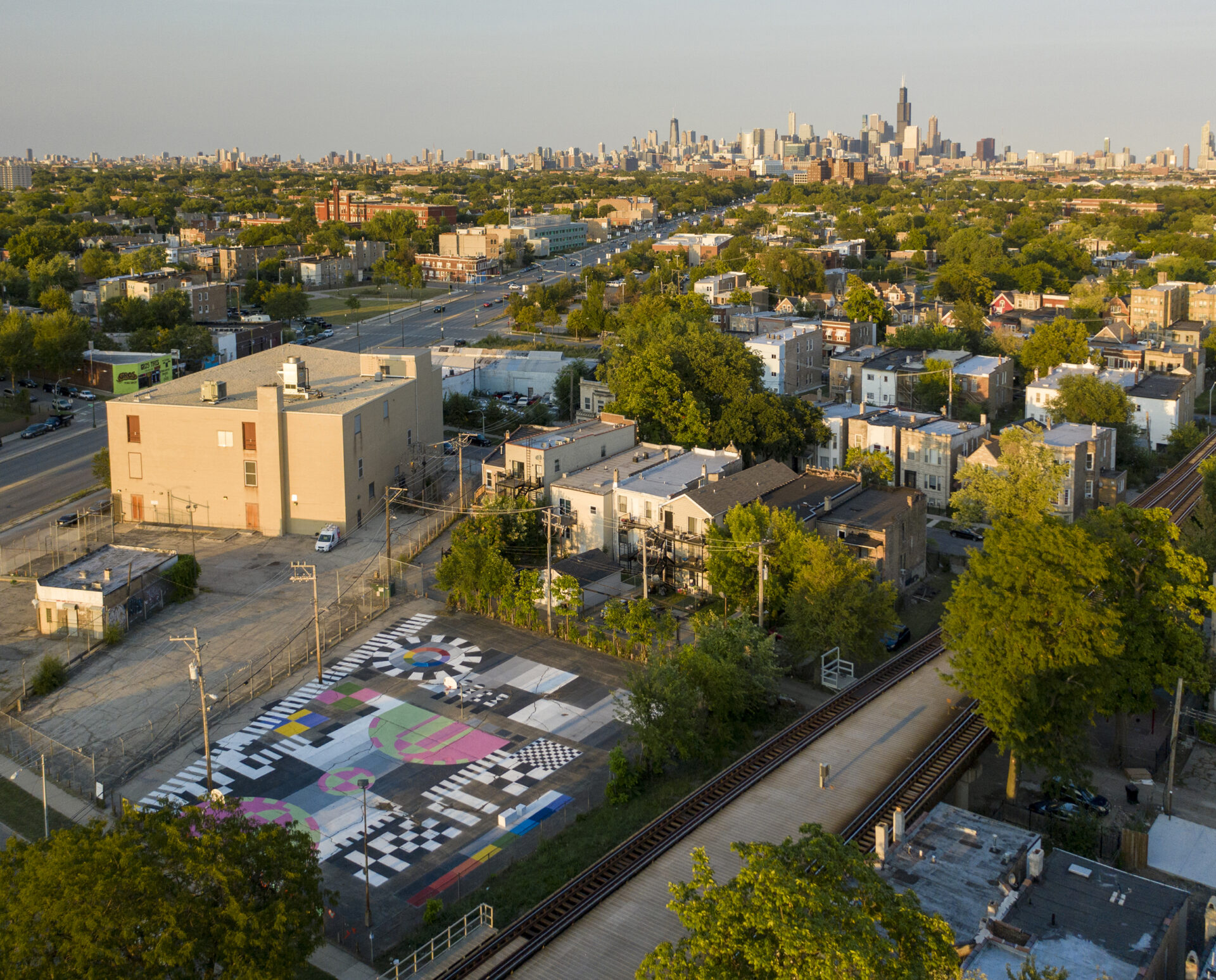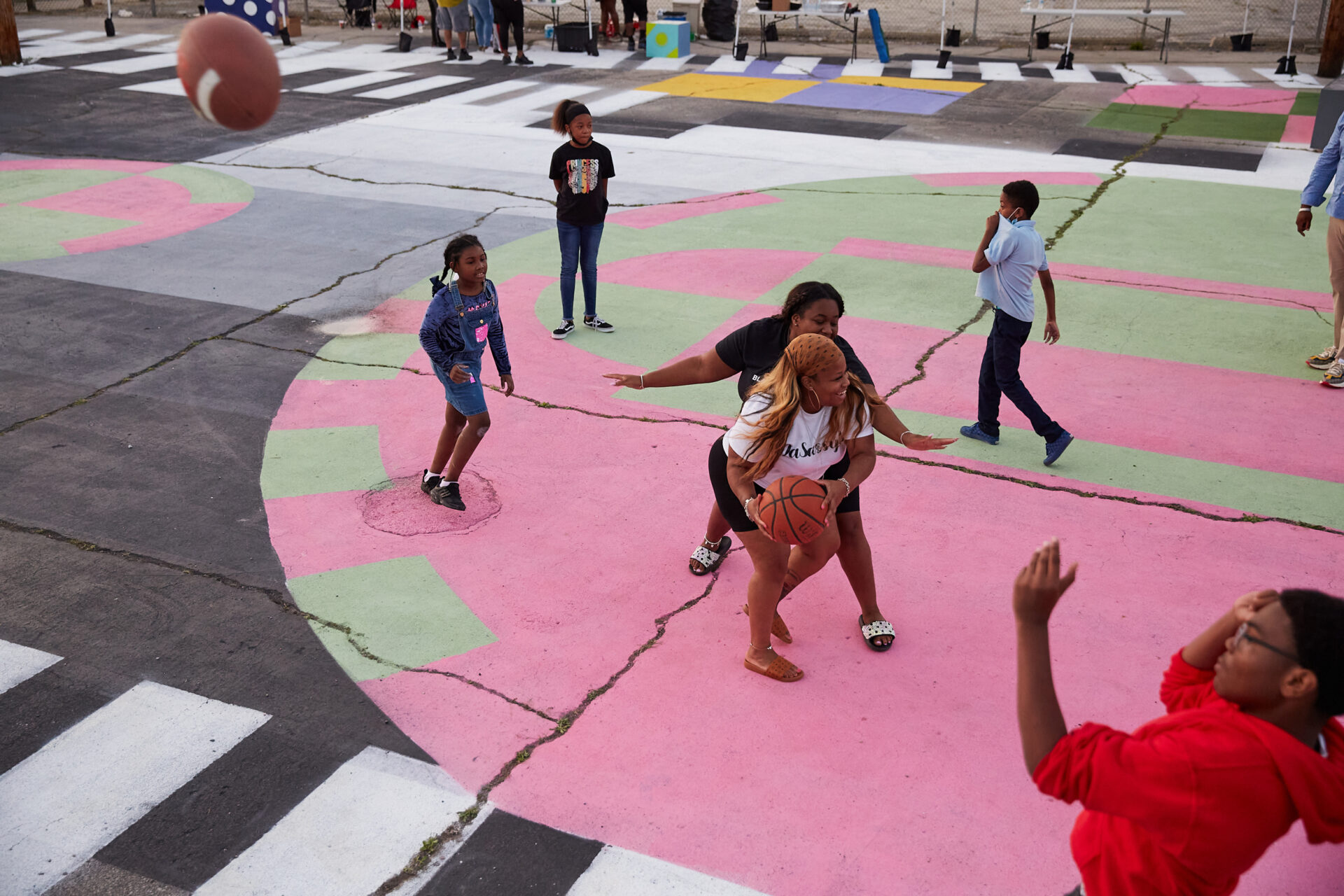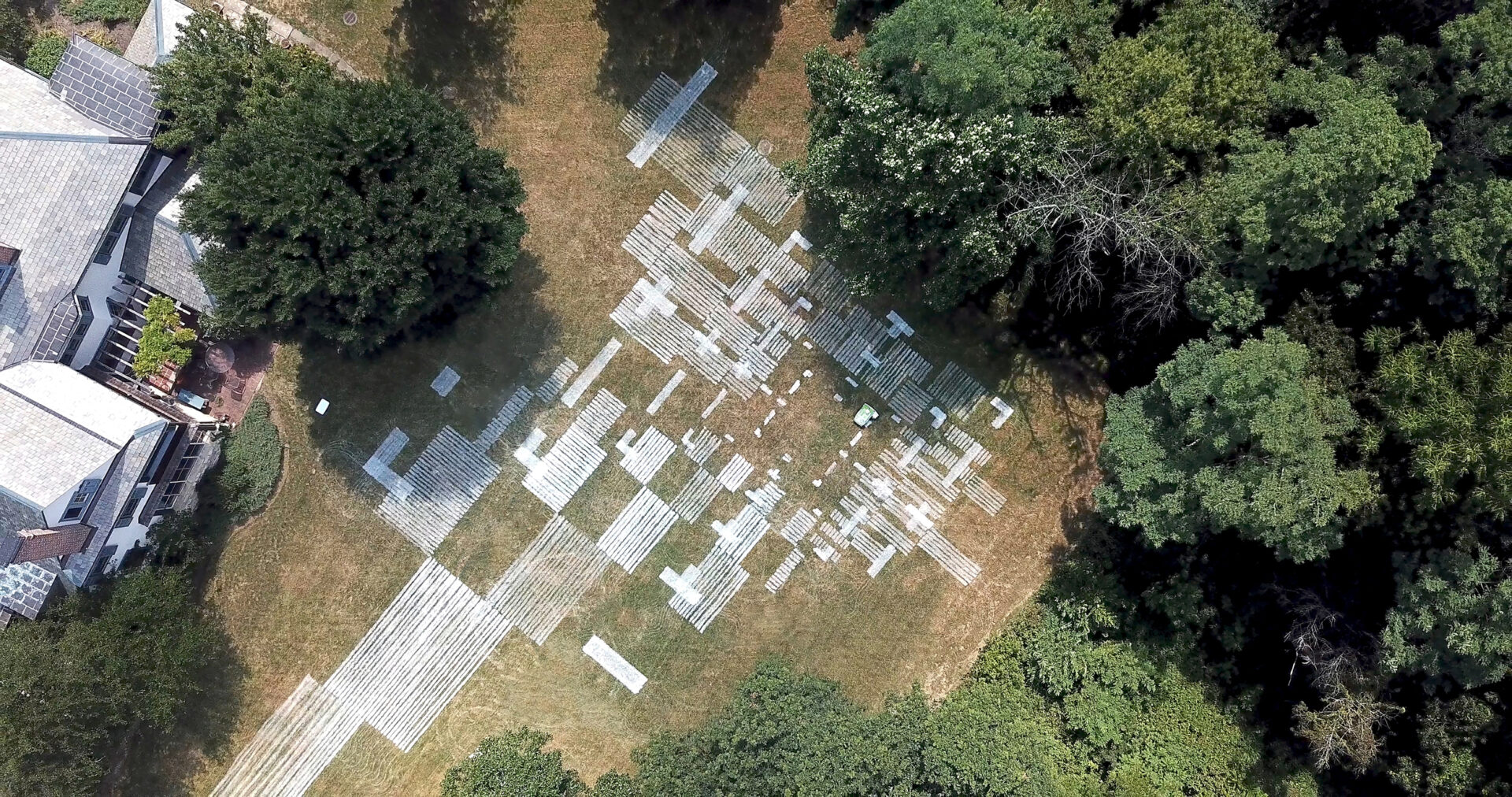
Outpost Office, "Drawing Fields No. 1," 2020; temporary marking paint, 150 x 40 ft. Photo: Outpost Office.
Outpost Office
Artist Statement
Outpost Office—a collaboration between Ashley Bigham and Erik Herrmann—seeks new public audiences through experimental creative production ranging from the serious to the absurd, often simultaneously. We propose architecture can be projective and impactful while at the same time inexpensive, temporal, and open-ended.
Architecture is closer than you think. It’s in the hardware store and market stall. It’s on soccer fields and neighborhood basketball courts. It’s in ephemeral in-person events and endless online scrolling. We find joy working in these spaces on the margins of the discipline, where architecture isn’t so obvious, for people who may not expect it. We believe there’s so much to learn in these spaces. So much to share. And so much potential for making discoveries that can advance how we talk and think about architecture.
While at Headlands
We are pursuing new means and methods for “timeful architecture,” a term we use to describe unfinished, seasonal, temporary, and adaptive forms of architecture.
We will be experimenting with drawings and other media to consider manifold timescales in the built environment, focusing not on architectures of fixity and predictability but on affordance and mutability. In our writing, installations, and buildings we advocate for a poly-temporal architecture that considers the extended lifecycle of material sourcing, planning, construction, use, and obsolescence.
Our world is changing faster than our design habits: we face urgent realities often at odds or even incompatible with notions of permanence—an ideological liability ill-suited to ecological and social balance. The situation demands that we as architects might learn to work with time rather than against it.
